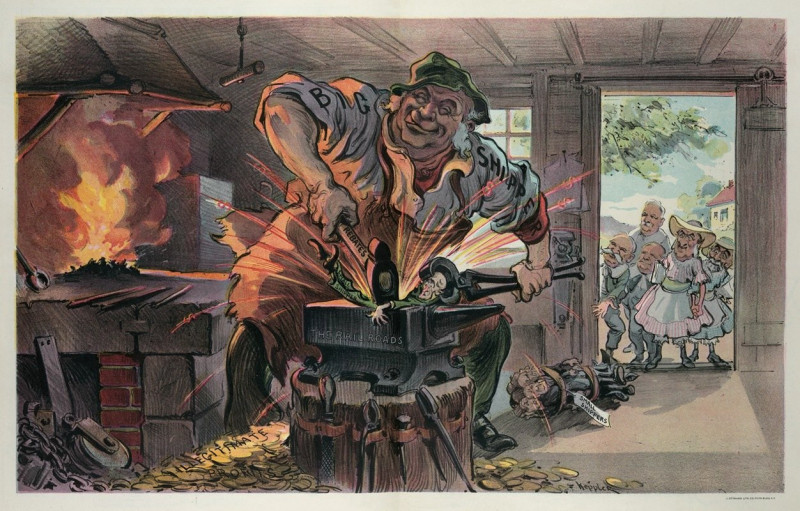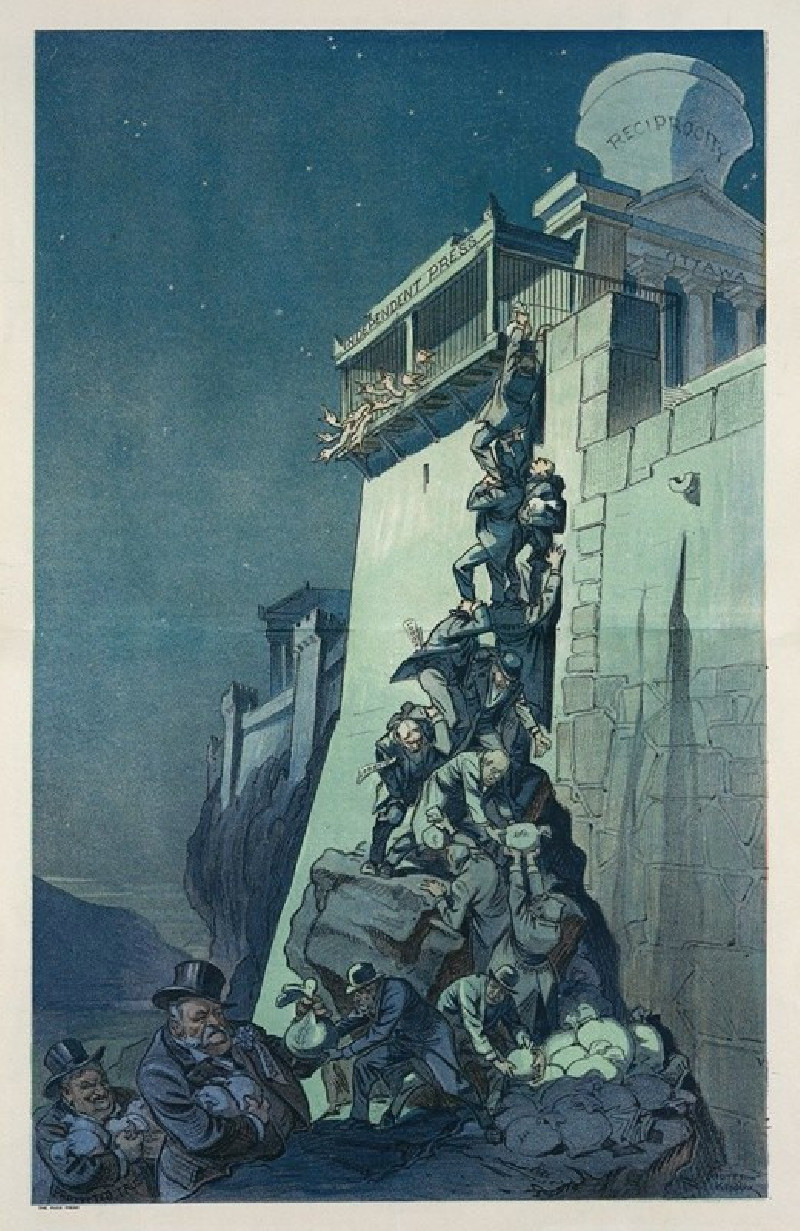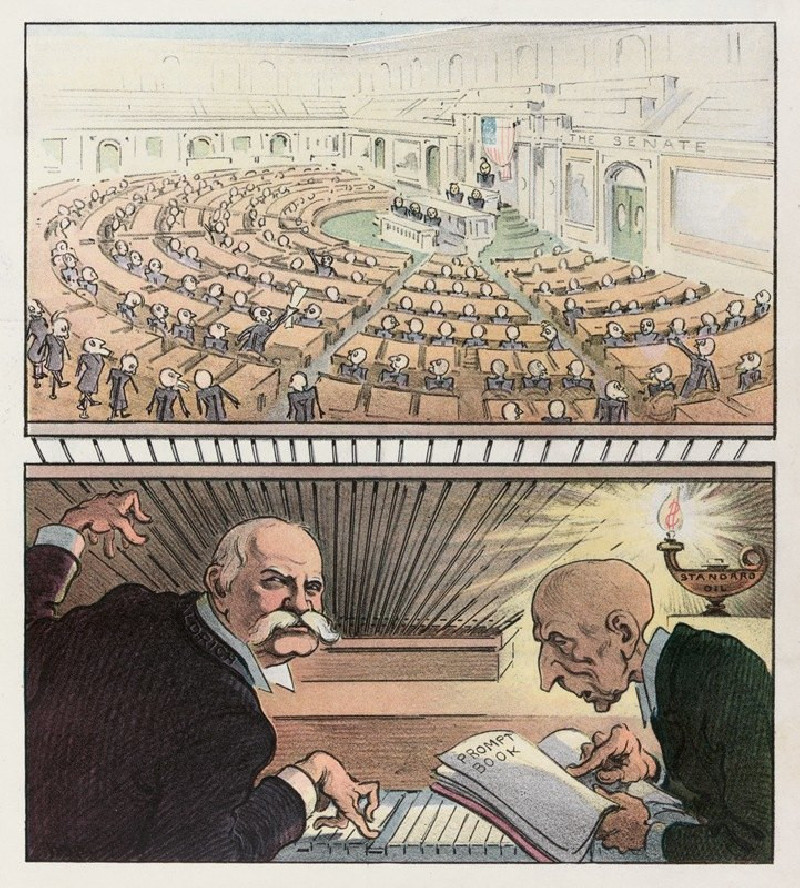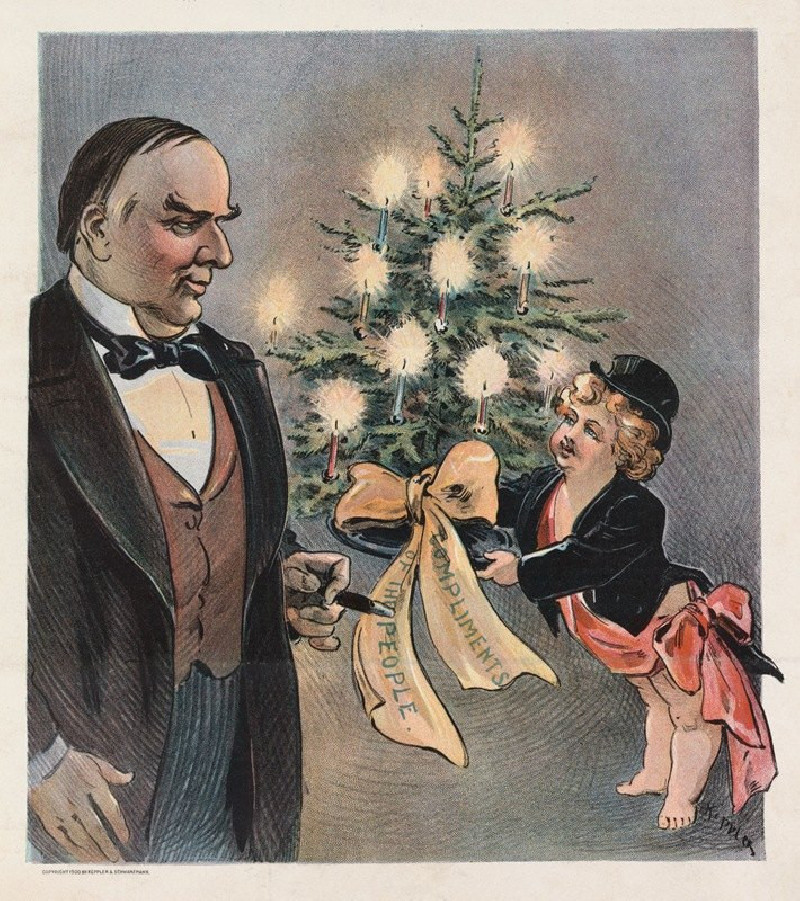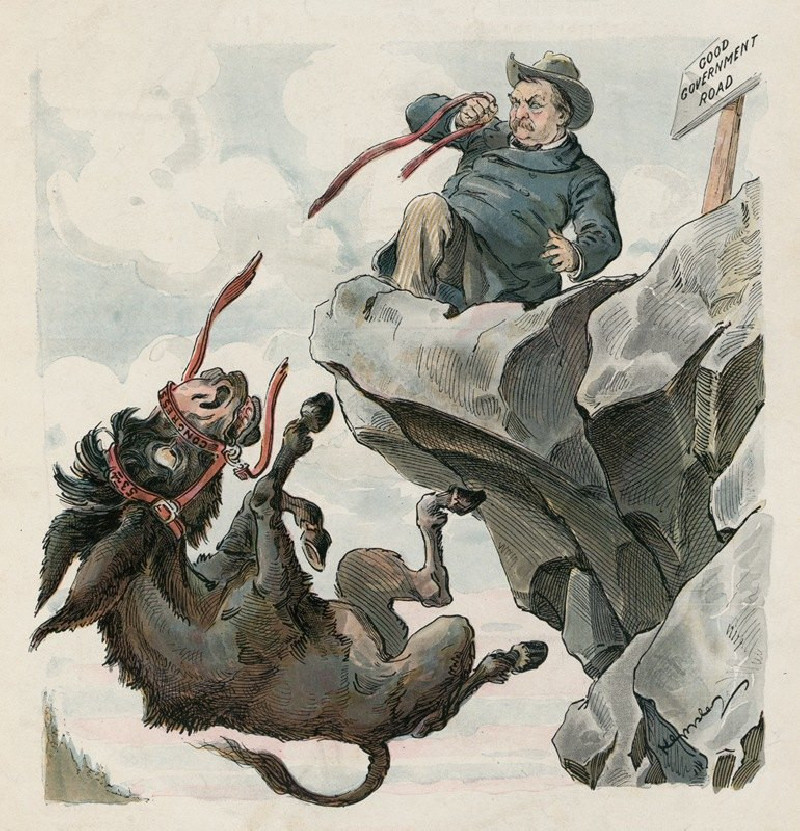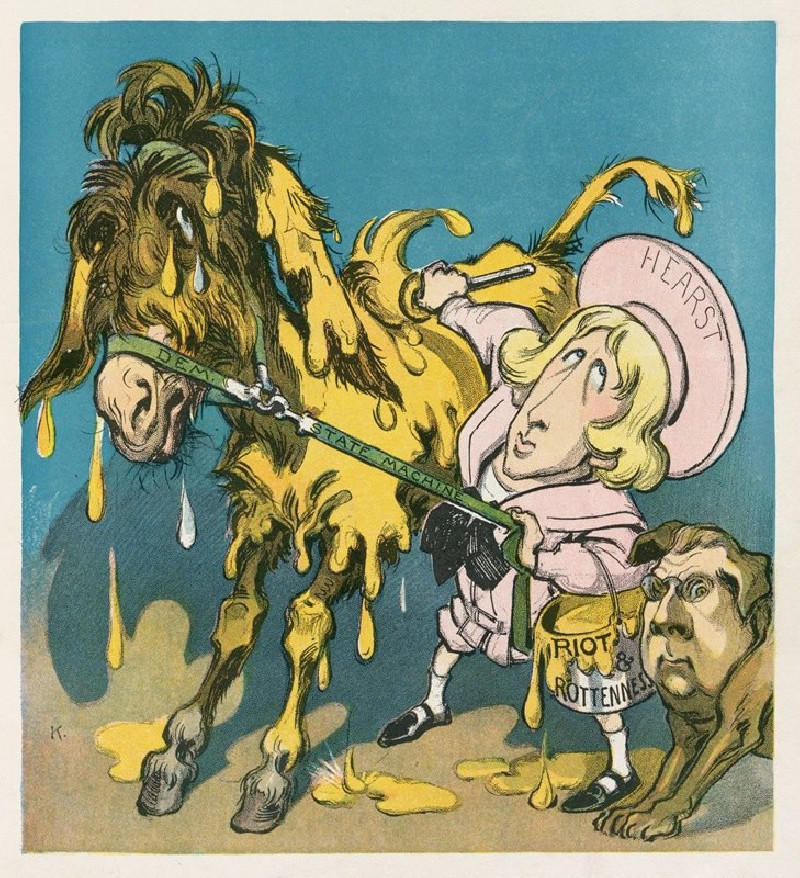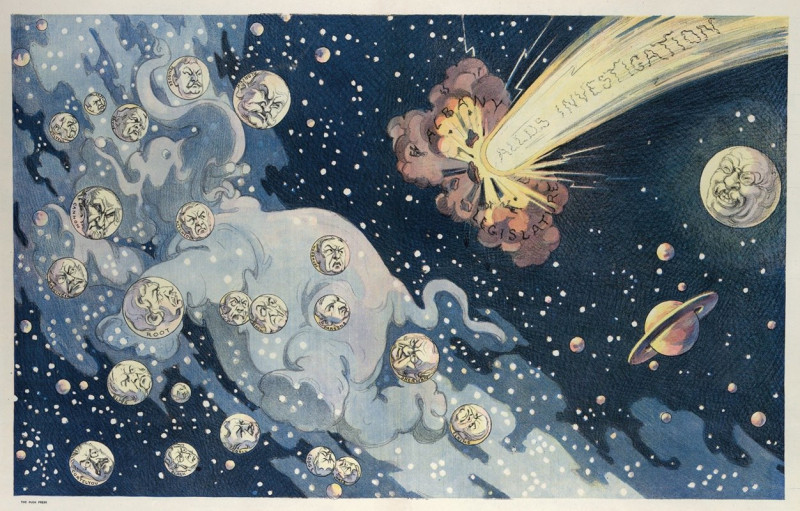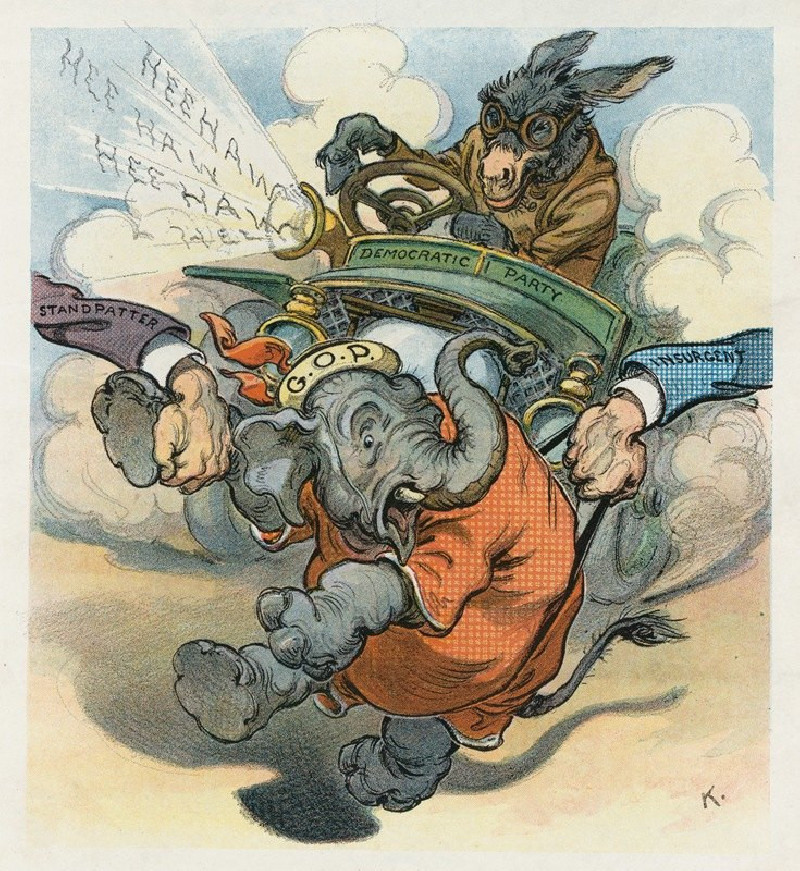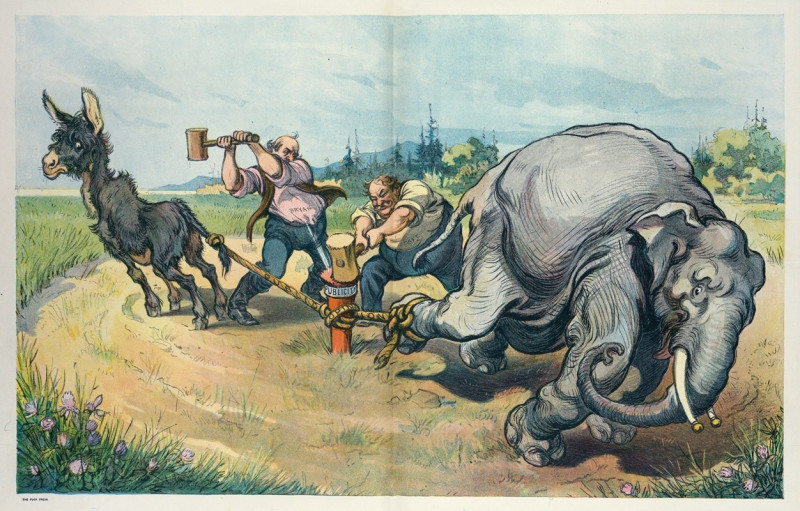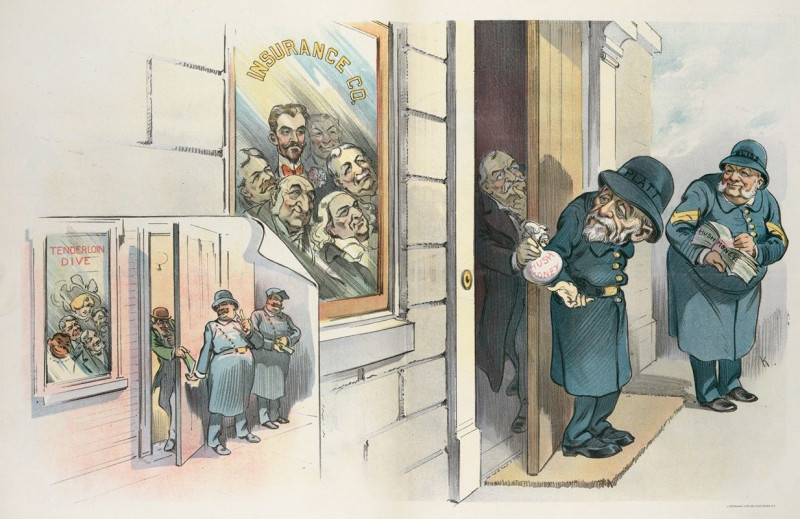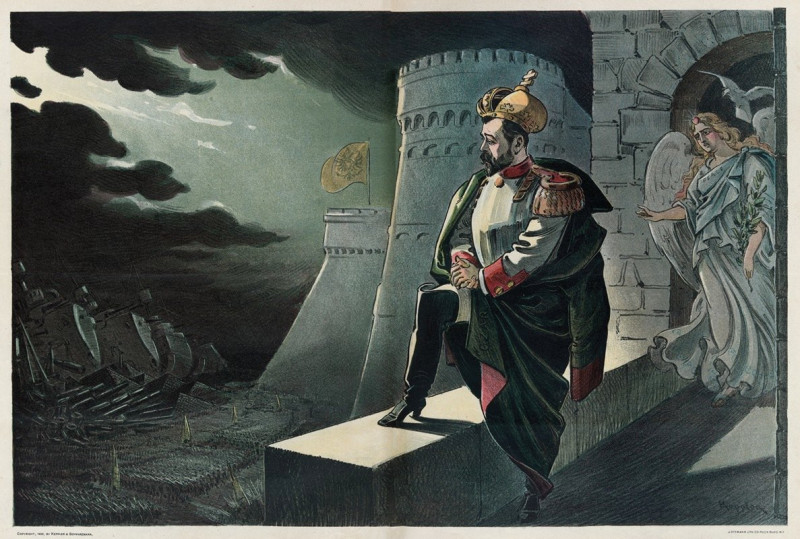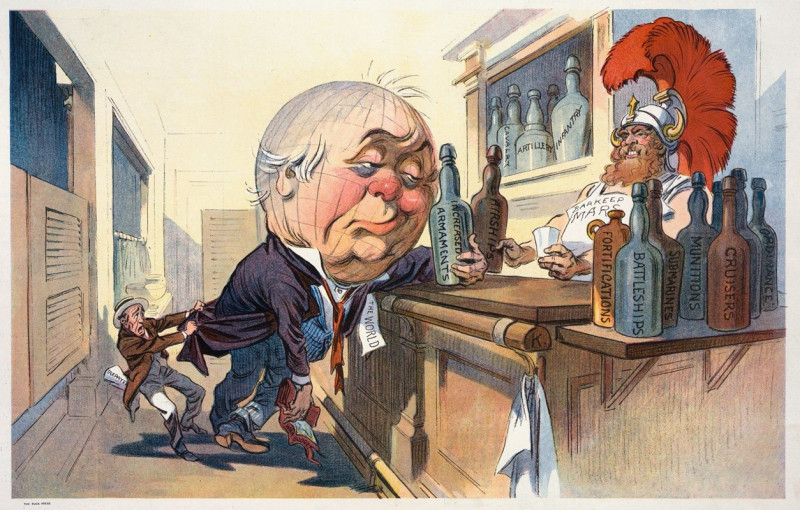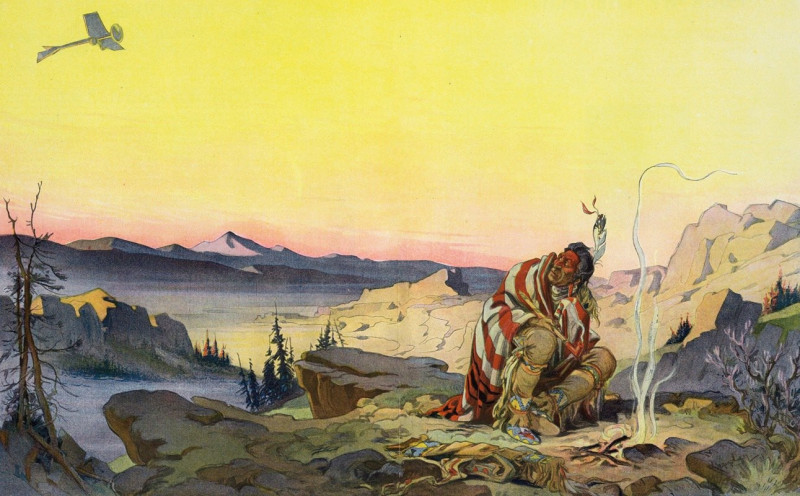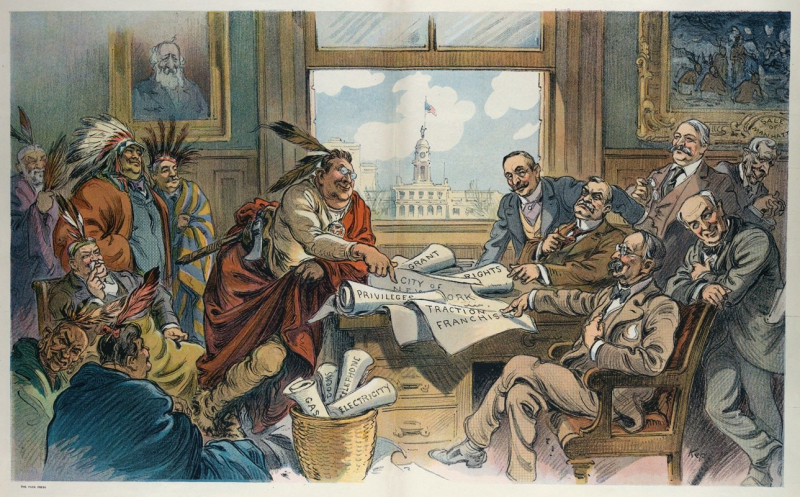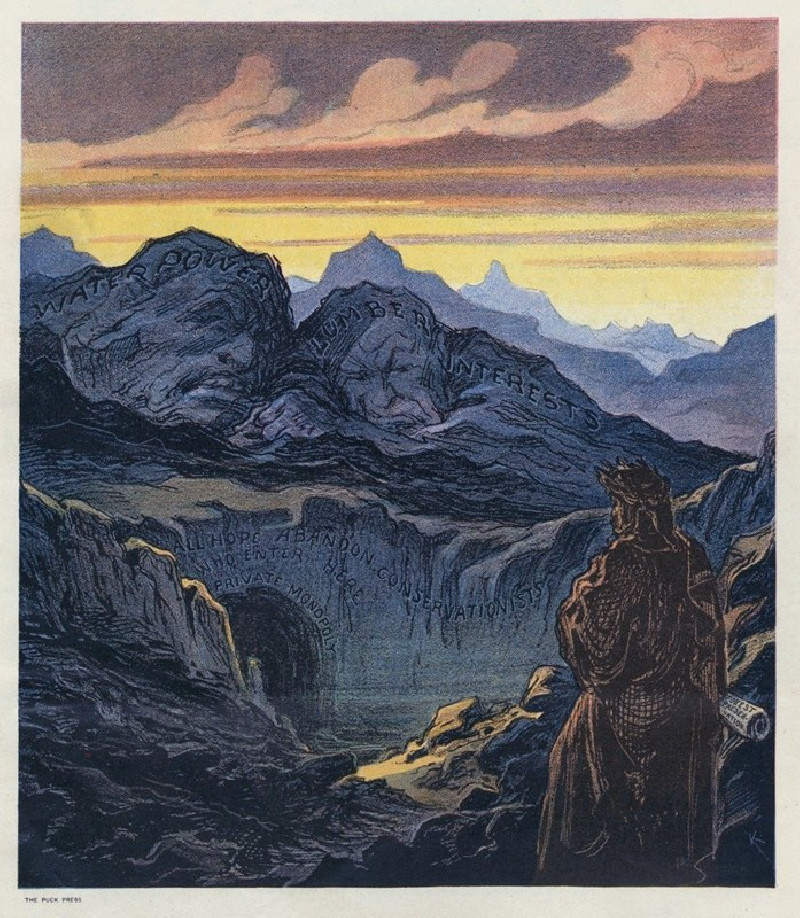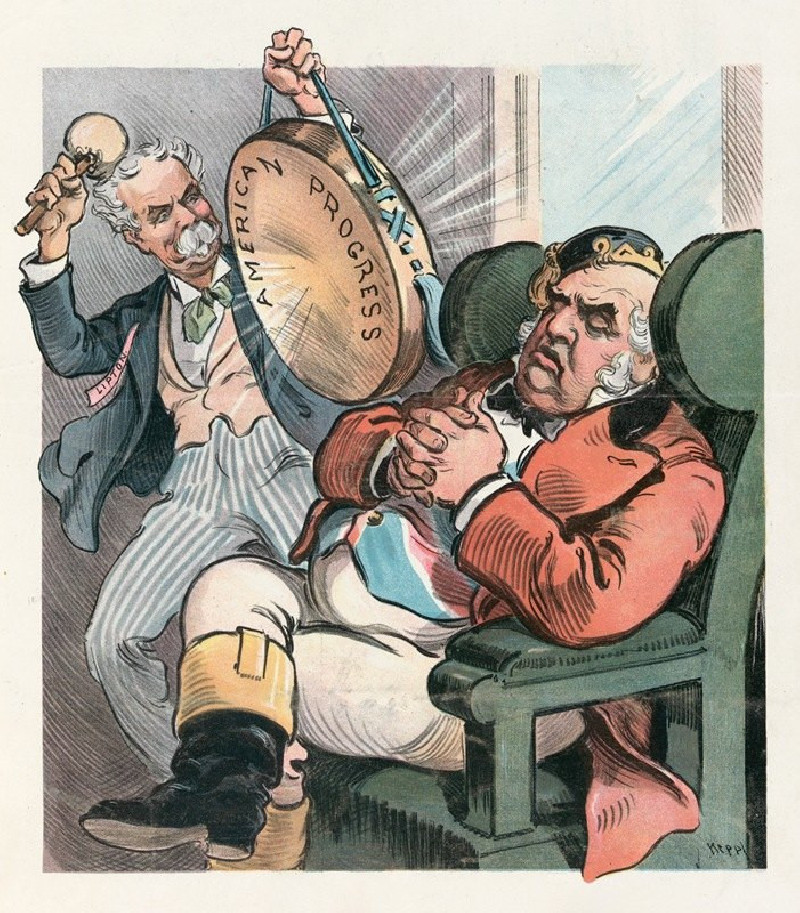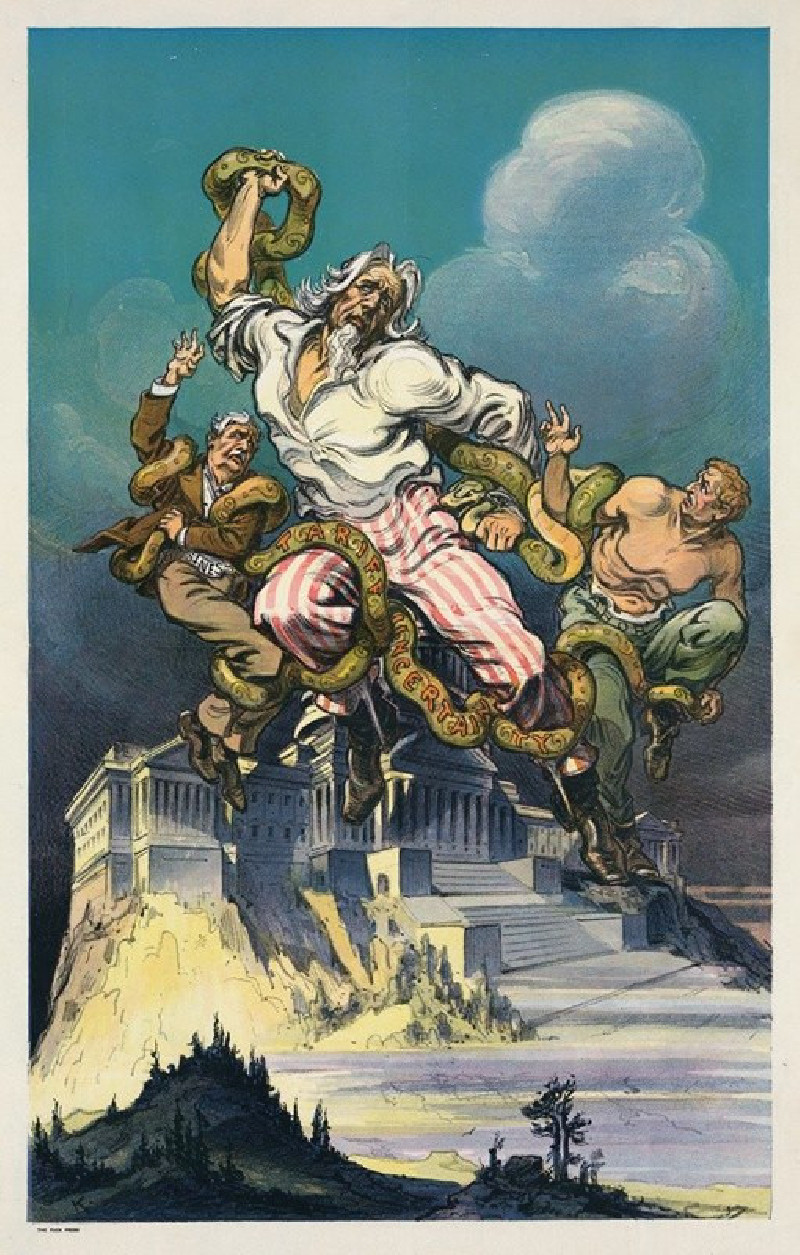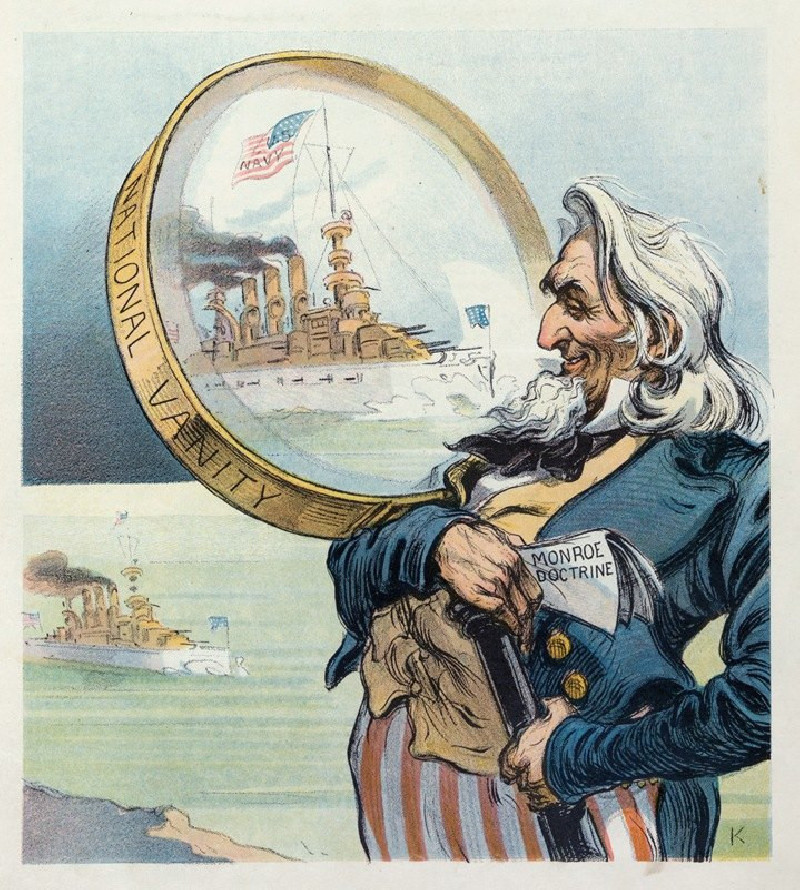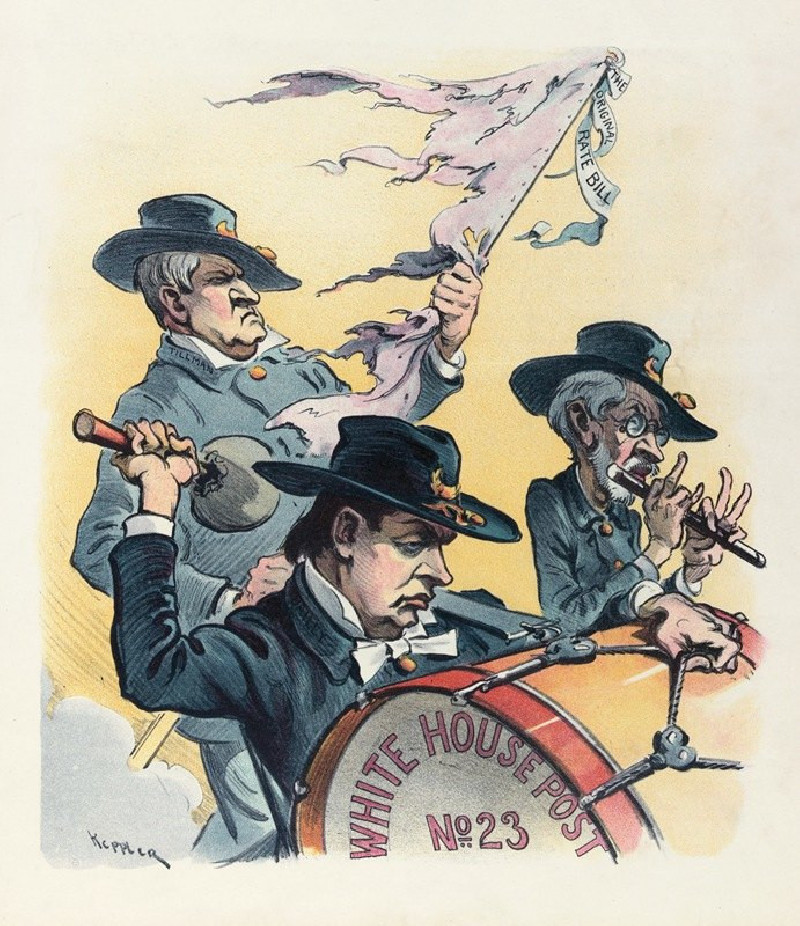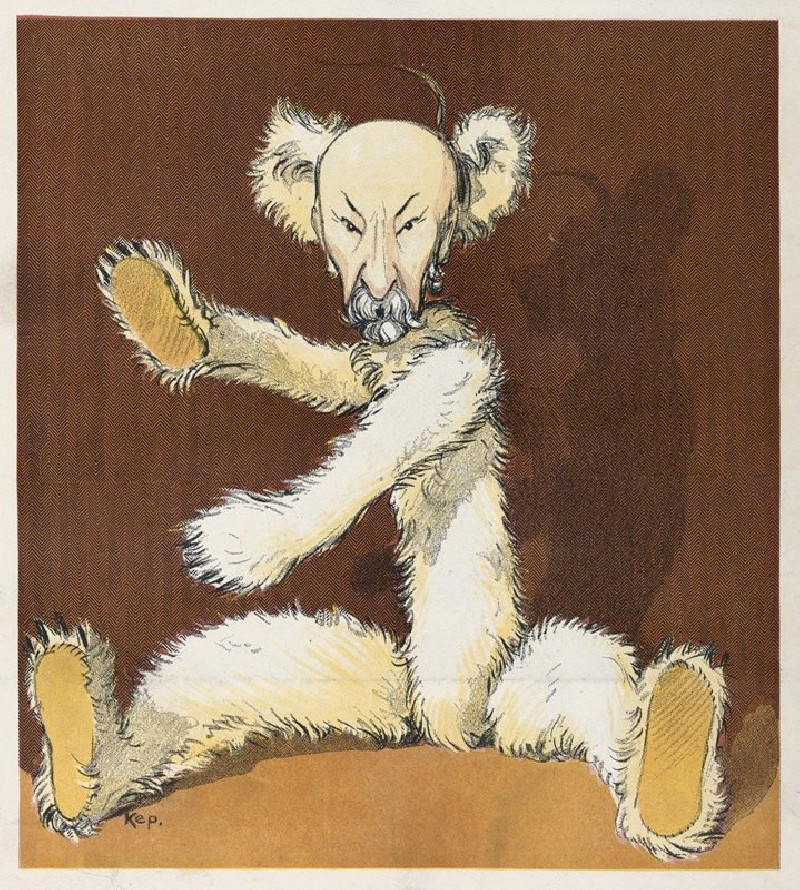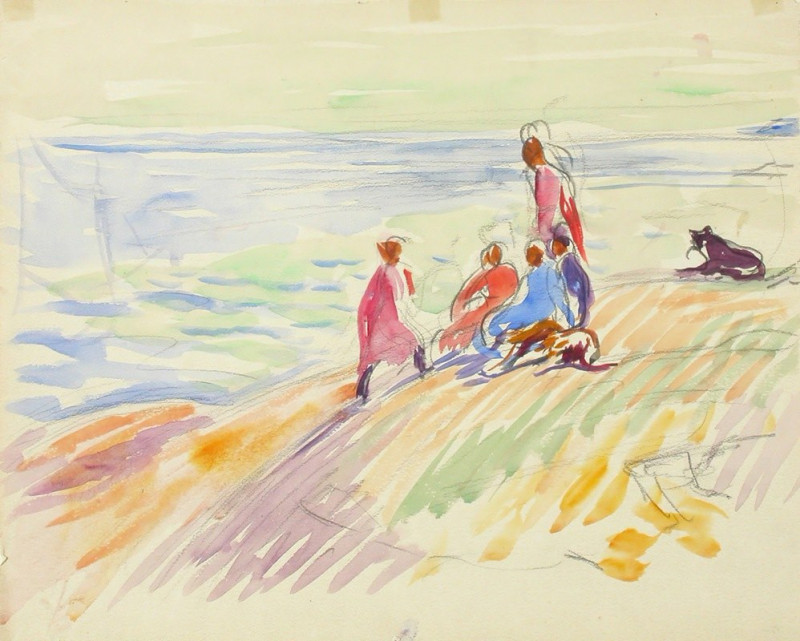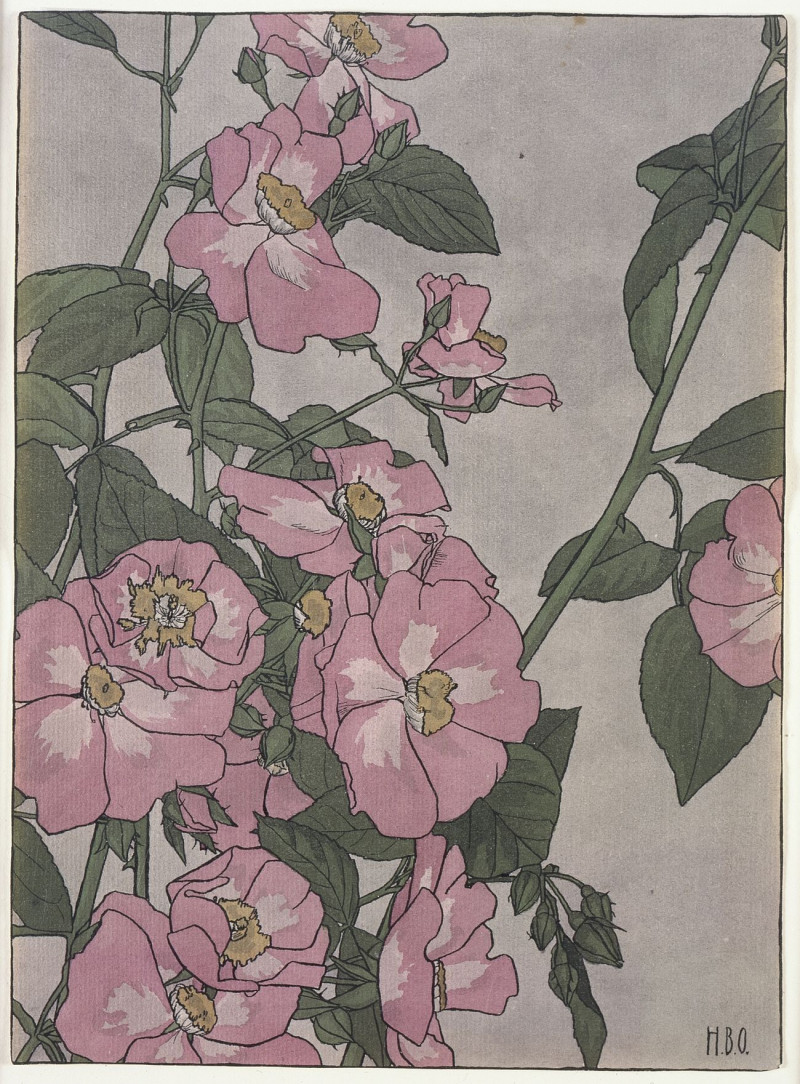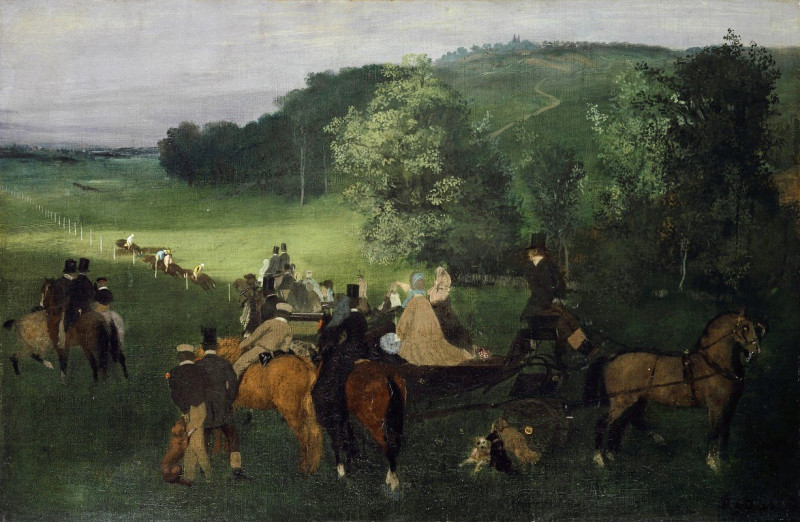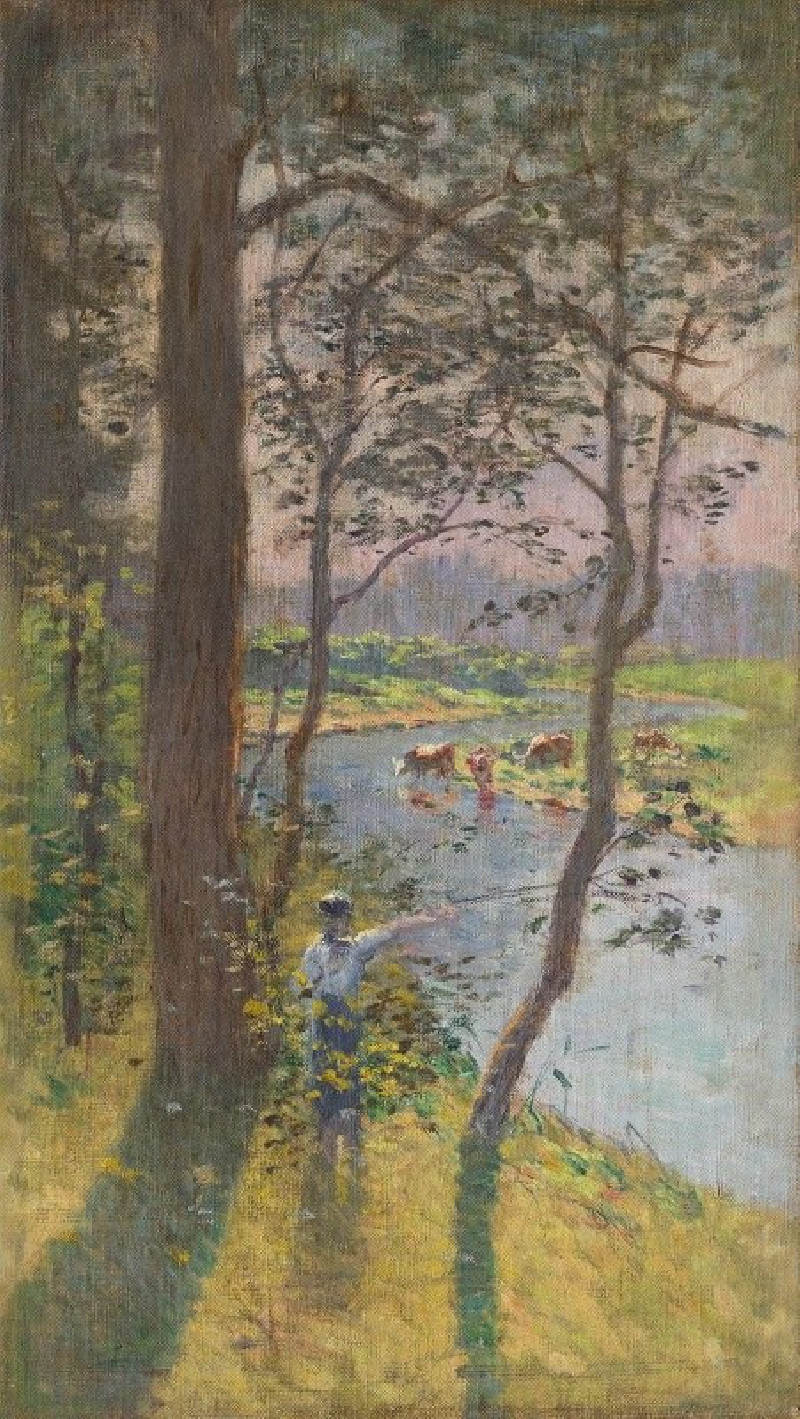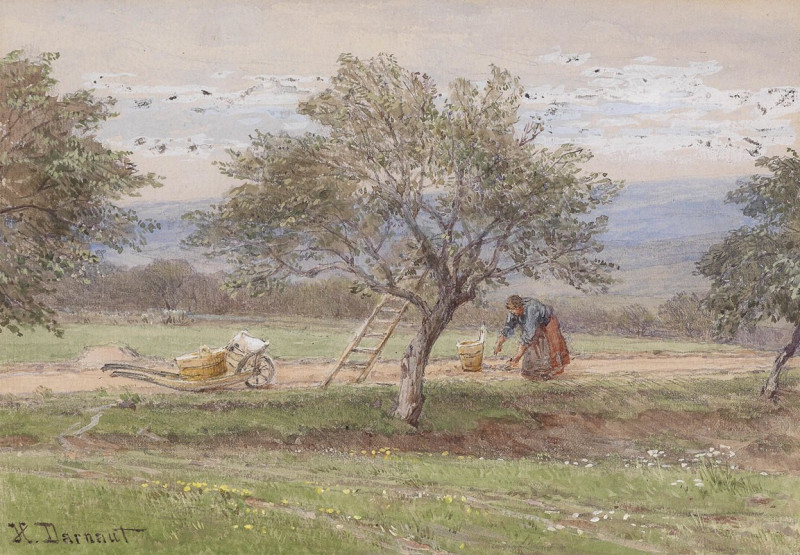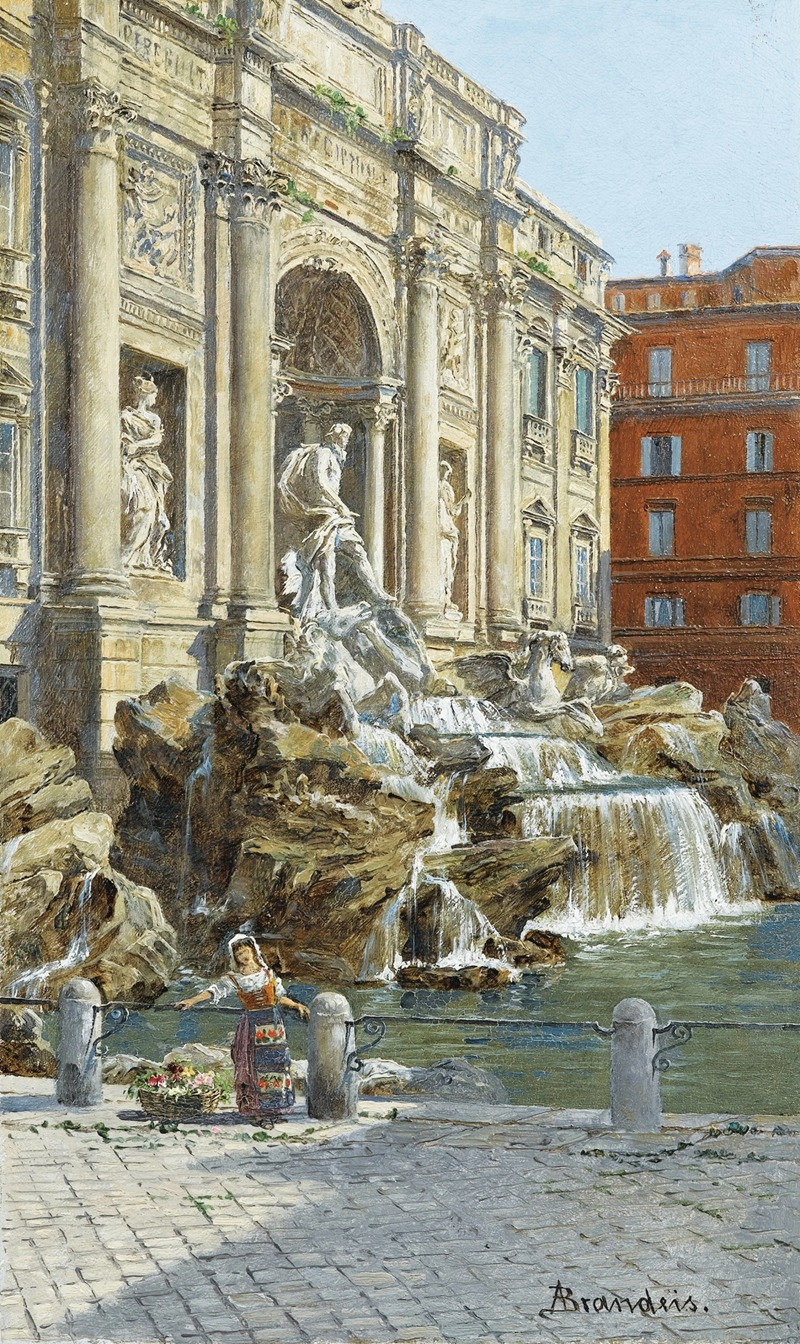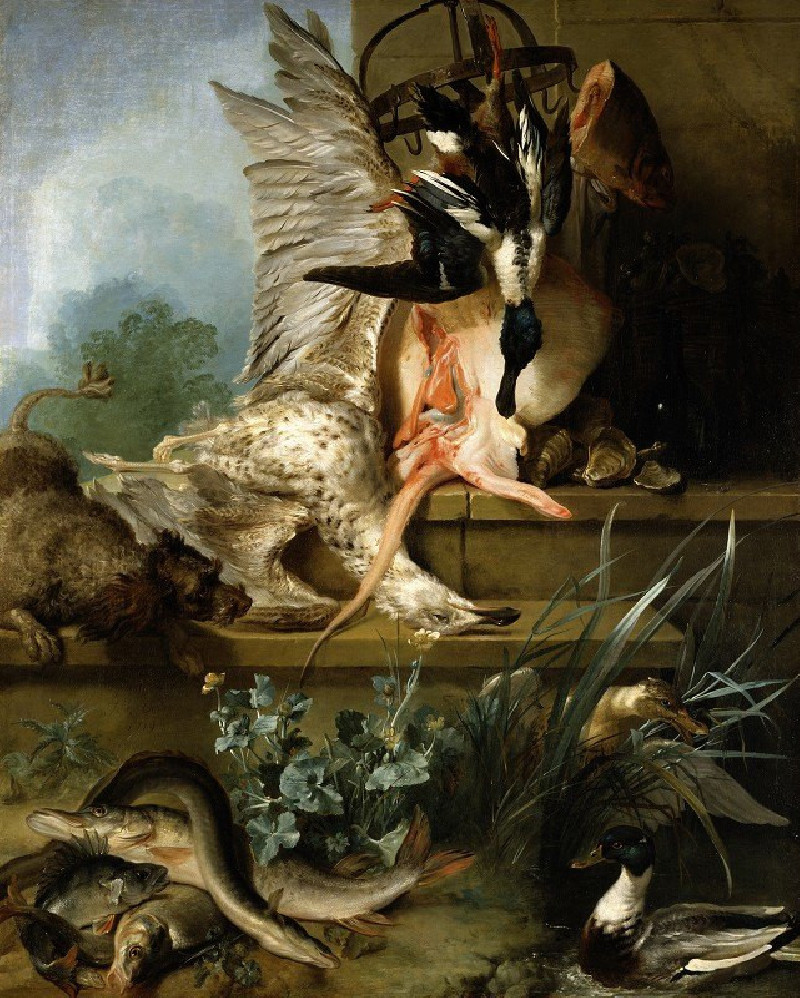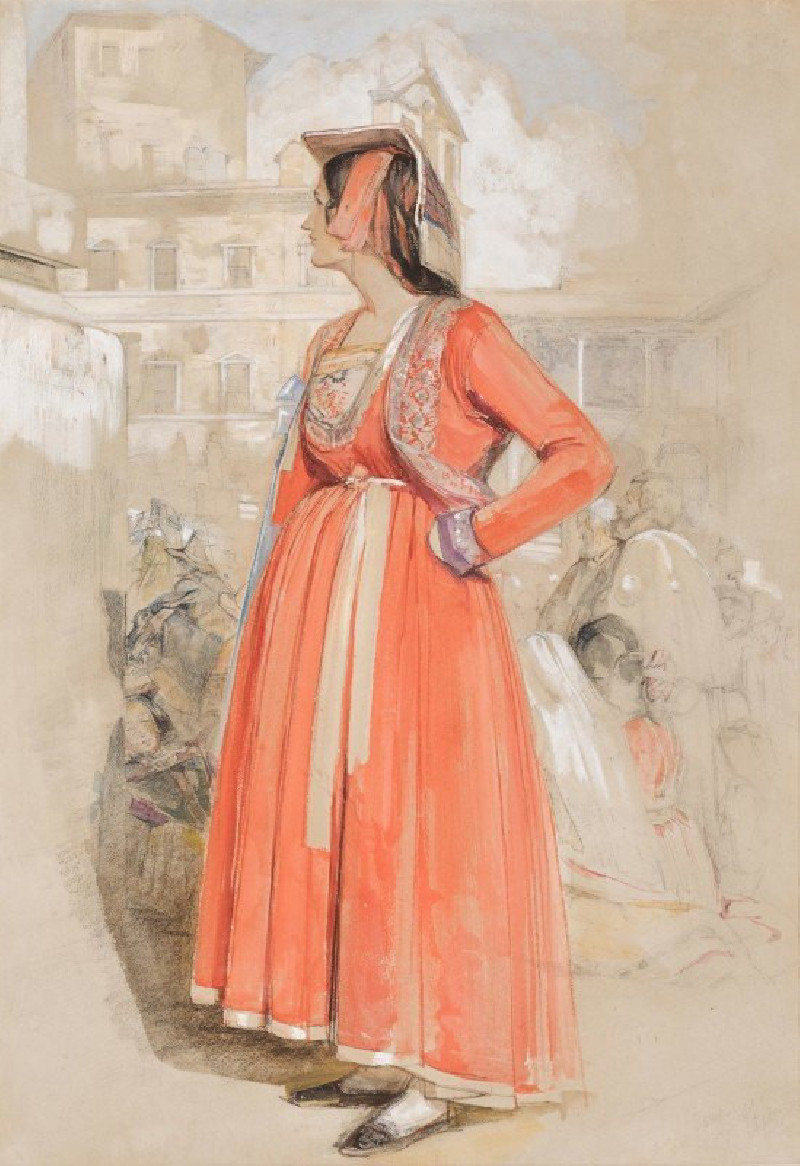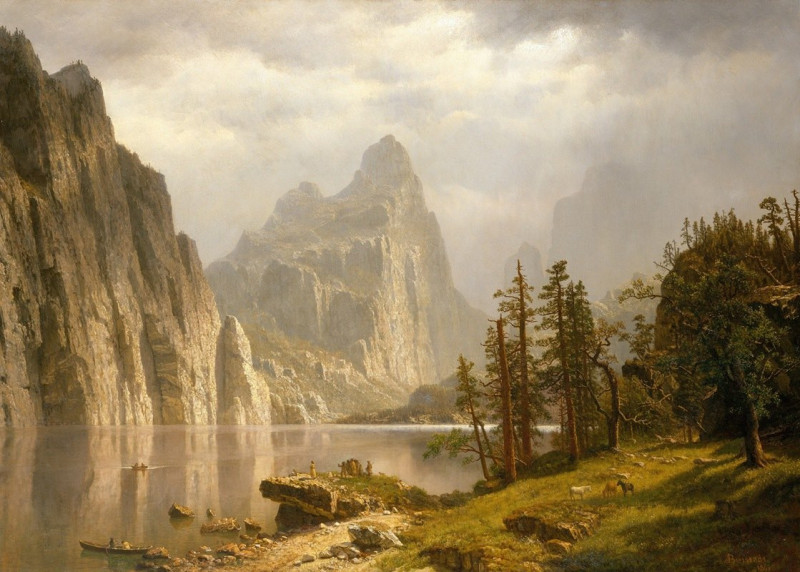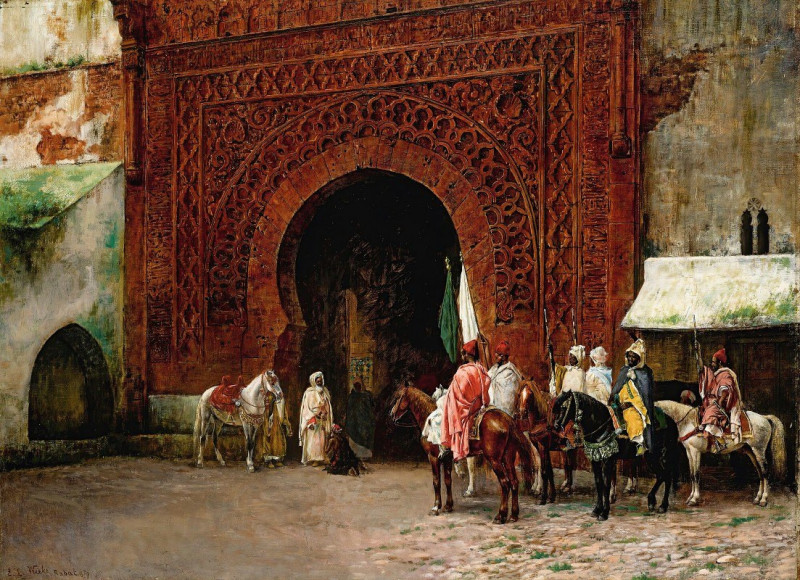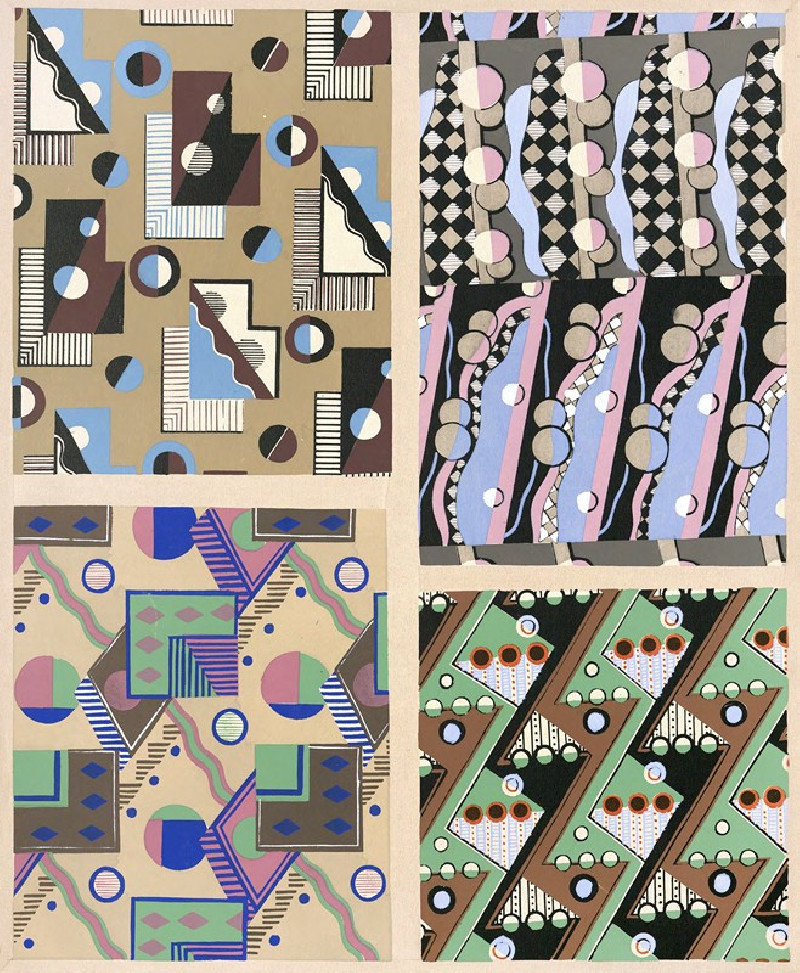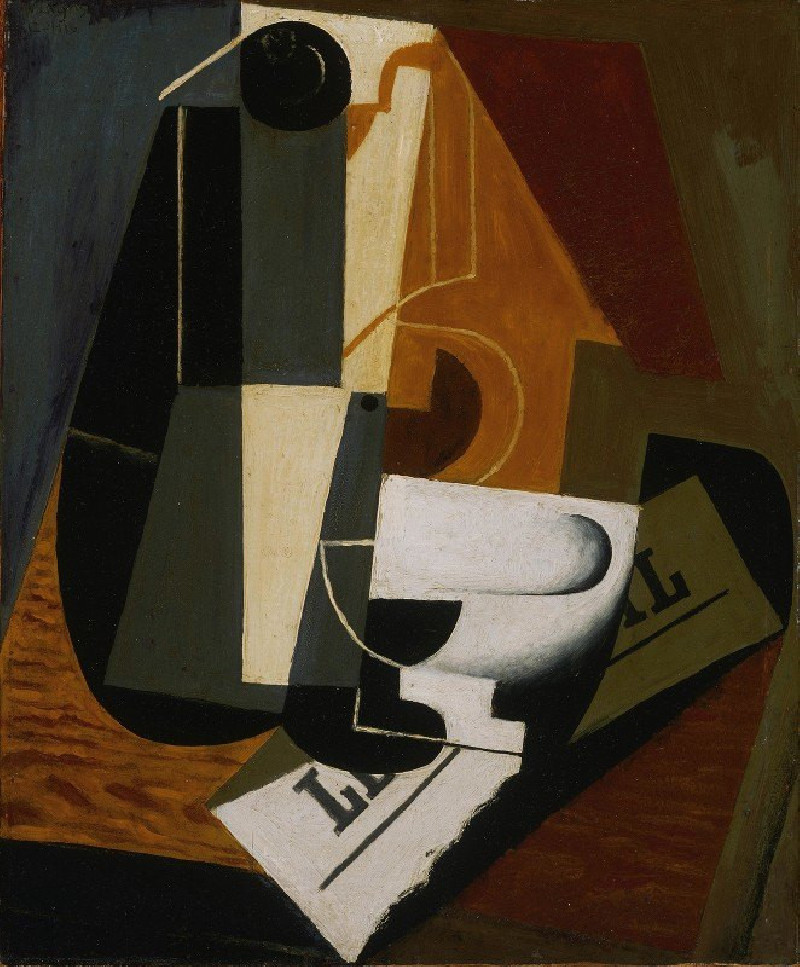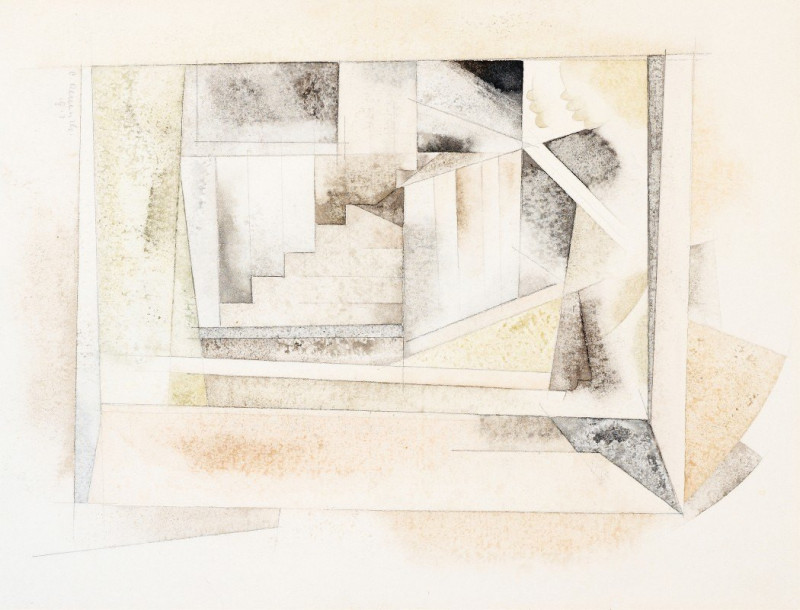The village blacksmith (1906)
Technique: Giclée quality print
Recommended by our customers
More about this artwork
"The Village Blacksmith" is a vivid and engaging painting by Udo Keppler that captivates viewers with its dynamic composition and satirical edge. The artwork, created in 1906, brilliantly encapsulates the political and social sentiments of its time through the lens of humor and caricature.At the heart of the scene is a robust and cheerful blacksmith, representing the railroad industry, as indicated by the label on his shirt. The blacksmith is depicted with exaggerated facial features, emphasizing his jovial yet sinister demeanor as he forges a mechanical figure labeled "Rate Bill," symbolizing legislative attempts to regulate railroad rates. This figure is hammered upon an anvil inscribed with "The Railroads," signifying the industry's impact and power.The environment is dramatic and fiery, with sparks flying as the blacksmith works, highlighting the intensity and heat of his labor. This metaphorically mirrors the heated debates and conflicts surrounding railroad regulations during that era.In the background, a group of onlookers peeks through the doorway, consisting of various public figures and citizens, their expressions ranging from curious to concerned. This addition serves to underscore the widespread attention and diverse opinions regarding the industry's influence on society and politics.Udo Keppler's "The Village Blacksmith" not only offers a glimpse into the historical context of early 20th-century America but also serves as a poignant critique of the interplay between business interests and legislative control. Through its caricatural style and rich symbolism, the painting provides a compelling narrative that remains relevant in discussions about corporate power and regulation.
Delivery
Returns
Udo J. Keppler, since 1894. known as Joseph Keppler, Jr., was an American political cartoonist, publisher, and Native American advocate. The son of cartoonist Joseph Keppler (1838–1894), who founded Puck magazine, the younger Keppler also contributed to cartoons, and after his father's death became co-owner of the magazine under the name Joseph Keppler. He was also a collector of Native American artifacts.

